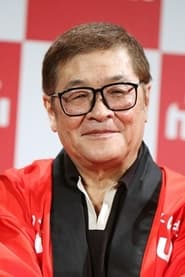Cast
View AllErika Karata
as Asako
Masahiro Higashide
as Baku / Ryohei
Rio Yamashita
as Maya
Sairi Ito
as Haruyo
Koji Seto
as Kushihashi
Daichi Watanabe
as Okazaki
Koji Nakamoto
as Hirakawa
Misako Tanaka
as Eiko
Takeshi Ōnishi
as
Ariei Umefune
as Art Exhibition Employee
Nao Okabe
as
Atsushi Kaneshige
as
Takao Kin
as
Maki Nishiyama
as
Atsushi Honma
as Ryohei's Colleague
Crew
Director
- Ryūsuke Hamaguchi
Producer
- Teruhisa Yamamoto
- Yuji Sadai
- Yasuhiko Hattori
Reviews
badelf
With this film (following Happy Hour), Hamaguchi cements his role as the ultimate diviner of the chaos of human emotion. Few other directors can navigate this terrain with the empathic thoroughness of Hamaguchi.
In "Asako I & II", Hamaguchi explores love's most mercurial landscape through a narrative of uncanny resemblance and emotional displacement. The film's subtle genius lies in its exploration of how we construct and reconstruct romantic narratives.
A pivotal moment occurs in Shigeo Gocho's photography exhibition, where Asako contemplates a photograph of what appear to be identical twins. This visual meditation becomes a metaphorical key to the film's deeper inquiry: Are we loving individuals, or projections of our own emotional needs?
Baku and Ryohei - two men who look remarkably alike but represent radically different emotional territories - become less characters than psychological states. They are what Asako draws to herself via the power of attraction. The truth about the title is that Asako is the real doppelganger, albeit internally. Erika Karata (Asako) does an amazing job conveying her internal pas de deux.
Hamaguchi suggests that romantic attachment is less about the specific person and more about our internal emotional choreography. His real directorial brilliance is his refusal to judge - which we will see again in "Drive My Car" - creating a nuanced exploration of how memory, desire, and perception intertwine to create what we call love.
Feb 17, 2025
Thematic Analysis
As a dramatic work, Asako I & II examines complex human relationships and emotional struggles against the backdrop of contemporary challenges that mirror our own experiences. The character development particularly stands out, offering viewers a chance to reflect on their own life journeys.
Director Ryūsuke Hamaguchi brings their distinctive visual style to this film, continuing their exploration of themes seen in their previous works while adding new elements. Their approach to character development and emotional depth creates a viewing experience that rewards close attention.
Released in 2018, the film exists within a cultural context that continues to evolve with our understanding of its themes. Its reception demonstrates the diverse reactions to its artistic choices and its place in cinema history.
Did You Know?
- The production of Asako I & II took approximately 8 months from pre-production to final cut.
- The final cut of the film runs for 119 minutes, though the director's initial assembly was reportedly 146 minutes long.
- The cast underwent specialized training for 3 weeks before filming began.
- The musical score contains over 67 unique compositions.
- The director insisted on using practical effects whenever possible, reserving CGI for only the most necessary scenes.
Historical Context
- In 2018, when this film is released:
- Political polarization was intensifying in many countries.
- Climate change awareness was becoming a central global concern.
- Streaming platforms were disrupting traditional distribution models and changing how audiences consumed films.
How This Film Stands Out
While Asako I & II shares thematic elements with other films in its genre, it distinguishes itself through its unique approach to storytelling, visual style, and character development.
Unlike Dolls, which takes a more conventional approach to its subject matter, Asako I & II subverts genre expectations by exploring its themes with greater nuance.
While films like Zatoichi and Sky High explore similar territory, Asako I & II stands apart through its deeper exploration of its central themes and more complex characterization.
This film's unique contribution to cinema lies in its thoughtful balance of entertainment value and thematic depth, making it a valuable addition to its genre.



























